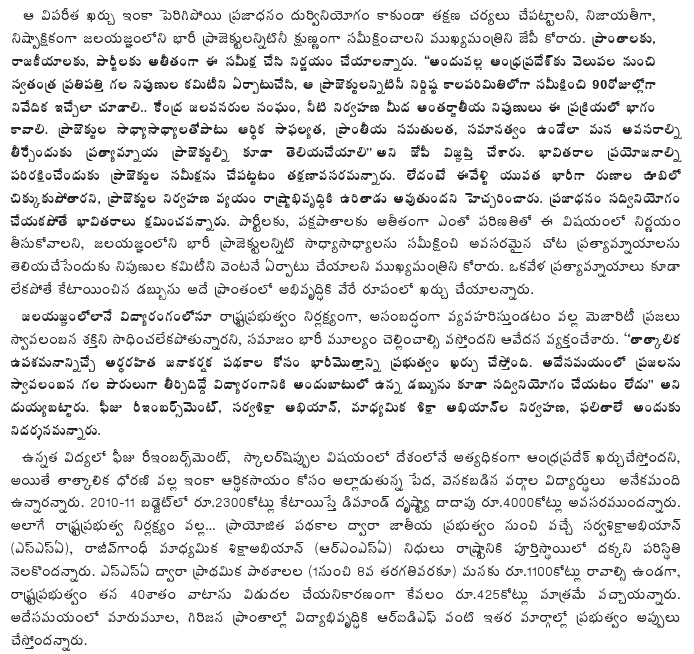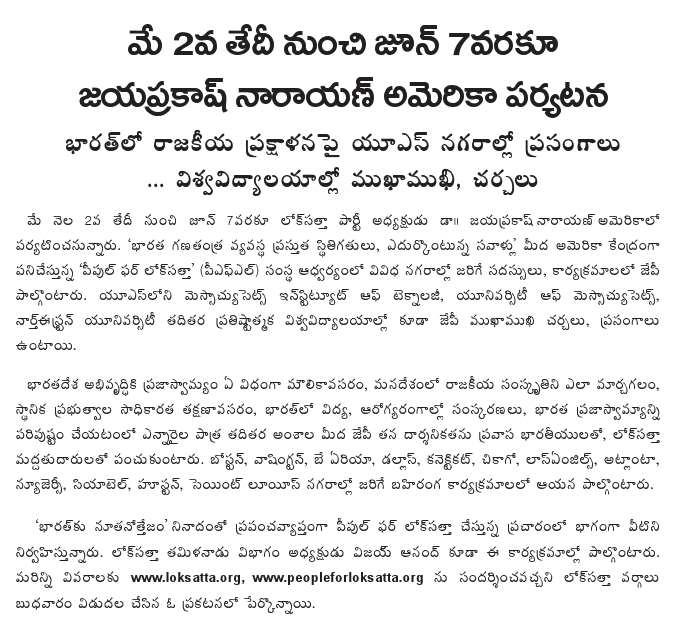Lok Satta welcomes road map for Empowering local governments
The Lok Satta Party today welcomed the Union Government’s road map for empowering local governments through formation of district councils, reorganization of Legislative Councils with two-thirds representation to local governments and 50 percent reservations for women and rotation of their constituencies once in 10 years.
Talking to the media, party leaders Katari Srinivasa Rao, P. Bhaskara Rao, and Karthik Chandra wanted the Union Government to amend the Constitution providing for mandatory devolution of powers and resources on local governments by State Governments.
The Lok Satta Party suggested that the proposed district councils be empowered to work as district governments with jurisdiction over both rural and urban areas. The district collector should be re-designated as district council secretary.
The Lok Satta would like the Legislative Council to comprise only members elected by local governments. It was strange that the council provides representation to teachers and graduates even to this day.
The party reiterated its long-standing demand that a per capita grant of Rs.1000 should be made to every village, town, and city so that people-elected ward committees could utilize the funds for addressing people’s needs effectively.
The party also demanded creation of 1000 new towns in the State as a means to promote economic development and prevent migration of people from rural areas to far off urban centers in search of work and livelihood.




